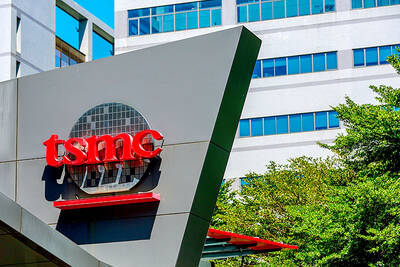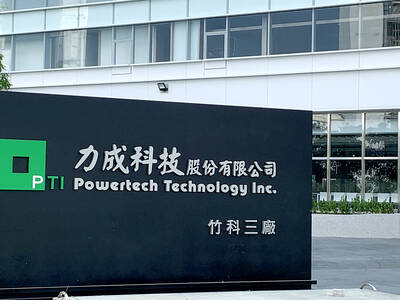Asustek Computer Inc’s (華碩) equity investment in a local networking equipment maker could provide the netbook computer pioneer a stepping stone to produce consumer networking devices, analysts said, although the company said the investment was purely financial.
Speculation abounded late last week about the real intentions behind Asustek’s equity investment in D-Link Corp (友訊) after the company had reportedly accrued a 4.27 percent stake late last year.
At first glance, the two companies bear no resemblance because Neihu-based Asustek’s core business is making computer motherboards, laptops, computer peripherals and handheld devices, while Hsinchu-based D-Link specializes in networking and communications, producing network hardware for consumers and small to medium-sized businesses.
However, because companies such as Sony Corp, Microsoft Corp and Acer Inc (宏碁) have envisioned a world of full connectivity between various electronic devices, “it is not difficult to see a possible collaboration between Asustek and D-Link in the near future as the two companies work on the technical details to connect all digital devices,” John Cheng (鄭若望), an analyst at International Data Corp’s Taipei branch, told the Taipei Times by telephone on Friday.
In 2005, when Asustek acquired shares of Askey Computer Corp (亞旭), a wireless local-area-network (LAN) equipment maker, analysts said the deal would be Asustek’s first foray into networking equipment and wireless communications.
Last month, Asustek chairman Jonney Shih (施崇棠) said during the Computex trade show that his grand plan was to create a complete “digital home,” where TVs, mobile handsets, navigation systems and personal computers could “talk” to each other and deliver all forms of digital content.
“The ability of devices to talk to each other is the whole concept behind wireless LAN,” Cheng said. “Plugging wireless adapters or switch routers into TVs, game consoles or stereo equipment will allow them to connect via radio frequency, and switch routers are exactly the type of business D-Link is in.”
D-Link has become a household name in WiFi or wireless LAN products worldwide.
Its main competitors include Cisco Systems Inc of the US and Huawei Technologies Co (華為) of China.
In recent years, in the face of fierce competition in supplying networking devices to telecoms operators, the company has gradually increased its focus on retail consumers in collaboration with PC vendors.
“D-Link’s products have accounted for roughly 22 percent in global markets. This part, if [Asustek] wants to move to the network communications industry, I think it should be one point for consideration,” Topology Research Institute (拓墣產業研究所) analyst Kelly Hsieh (謝雨珊) told the local cable TV station USTV on Friday.
Another analyst, however, thinks the odds for a potential partnership between the two companies are low.
“Asustek already does a very good job of enabling 802.11n WiFi and Bluetooth on its computers. I really cannot come up with ideas for potential strategic partnership between the two,” Helen Chiang (江芳韻), a PC and peripherals research manager at IDC, said on Friday by telephone.
The D-Link share purchase took place at the end of last year, with Asustek saying it had earlier disclosed the deal to the public and that it was never a secret from investors.
In a stock exchange filing on Friday, Asustek said the company and its venture capital unit, Asustek Holdings Ltd (華誠創投), had bought D-Link shares on the open market “during the fourth quarter of last year” on consideration of “short-term efficiency of capital utilization.”
“The D-Link holding is purely for investment purchases. It has no other objectives,” Nick Wu (吳長榮), deputy director at Asustek’s finance and accounting division, said by telephone.
Wu said there has been no trading in D-Link shares since then and the company had no intention to buy more D-Link shares.
Asustek also holds United Microelectronics Corp (聯電) shares in its stock portfolio, Wu said.
The company has held the world’s second-biggest contract chipmaker’s shares for at least 10 years, also for financial purpose, he said.
Asustek shares have risen 26.9 percent so far this year and closed at NT$46.7 on Friday, while those of D-Link have increased 22 percent to NT$28, Taiwan Stock Exchange data showed.

RUN IT BACK: A succesful first project working with hyperscalers to design chips encouraged MediaTek to start a second project, aiming to hit stride in 2028 MediaTek Inc (聯發科), the world’s biggest smartphone chip supplier, yesterday said it is engaging a second hyperscaler to help design artificial intelligence (AI) accelerators used in data centers following a similar project expected to generate revenue streams soon. The first AI accelerator project is to bring in US$1 billion revenue next year and several billion US dollars more in 2027, MediaTek chief executive officer Rick Tsai (蔡力行) told a virtual investor conference yesterday. The second AI accelerator project is expected to contribute to revenue beginning in 2028, Tsai said. MediaTek yesterday raised its revenue forecast for the global AI accelerator used

Taiwan Semiconductor Manufacturing Co (TSMC, 台積電) has secured three construction permits for its plan to build a state-of-the-art A14 wafer fab in Taichung, and is likely to start construction soon, the Central Taiwan Science Park Bureau said yesterday. Speaking with CNA, Wang Chun-chieh (王俊傑), deputy director general of the science park bureau, said the world’s largest contract chipmaker has received three construction permits — one to build a fab to roll out sophisticated chips, another to build a central utility plant to provide water and electricity for the facility and the other to build three office buildings. With the three permits, TSMC

The DBS Foundation yesterday announced the launch of two flagship programs, “Silver Motion” and “Happier Caregiver, Healthier Seniors,” in partnership with CCILU Ltd, Hondao Senior Citizens’ Welfare Foundation and the Garden of Hope Foundation to help Taiwan face the challenges of a rapidly aging population. The foundation said it would invest S$4.91 million (US$3.8 million) over three years to foster inclusion and resilience in an aging society. “Aging may bring challenges, but it also brings opportunities. With many Asian markets rapidly becoming super-aged, the DBS Foundation is working with a regional ecosystem of like-minded partners across the private, public and people sectors

BREAKTHROUGH TECH: Powertech expects its fan-out PLP system to become mainstream, saying it can offer three-times greater production throughput Chip packaging service provider Powertech Technology Inc (力成科技) plans to more than double its capital expenditures next year to more than NT$40 billion (US$1.31 billion) as demand for its new panel-level packaging (PLP) technology, primarily used in chips for artificial intelligence (AI) applications, has greatly exceeded what it can supply. A significant portion of the budget, about US$1 billion, would be earmarked for fan-out PLP technology, Powertech told investors yesterday. Its heavy investment in fan-out PLP technology over the past 10 years is expected to bear fruit in 2027 after the technology enters volume production, it said, adding that the tech would